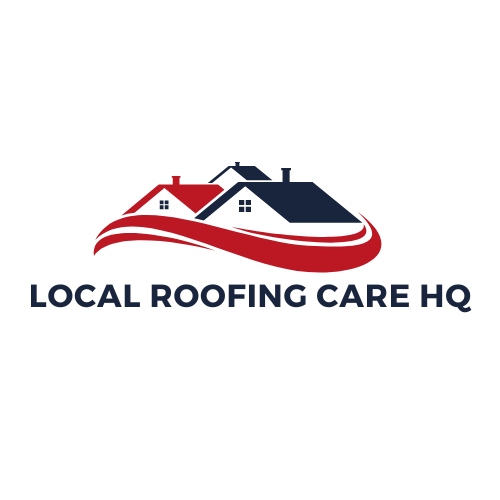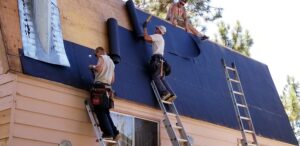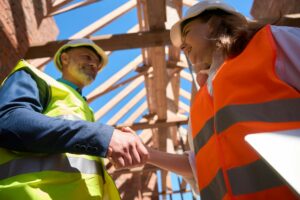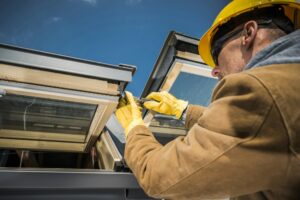In the realm of home improvement, energy-efficient roof installation emerges as a prudent investment that offers advantages for both financial savings and environmental sustainability.
This approach contributes to lowering energy bills, reducing one’s environmental footprint, and potentially increasing the value of the home.
The following article will examine the signs that indicate a roof may require replacement, the most effective energy-efficient materials available, and the steps involved in the installation process.
Additionally, essential maintenance tips for the new roof will be provided to ensure it remains as efficient as possible.
Explore how you can enhance your home’s energy efficiency while making a positive contribution to the environment.
Why Is Energy-Efficient Roof Installation Important?
The installation of energy-efficient roofing is essential for both homeowners and businesses, forming a fundamental aspect of sustainable building practices while offering substantial returns on investment.
By employing eco-friendly materials and advanced roofing systems, property owners can realize significant energy savings, minimize their carbon footprint, and improve overall thermal performance. This approach not only benefits the environment but also enhances property value through improved energy efficiency ratings.
Furthermore, investing in energy-efficient roofing can result in considerable savings on utility expenses, rendering it a cost-effective option for both residential and commercial properties.
1. Saves Money on Energy Bills
Installing an energy-efficient roof can result in substantial reductions in energy expenses, enabling homeowners to realize significant savings over time. By enhancing insulation value and improving roof ventilation, energy-efficient roofing systems can decrease energy consumption while promoting heat retention, ultimately leading to lower utility bills.
These roofing solutions frequently utilize advanced insulation materials that more effectively regulate indoor temperatures, thereby minimizing the reliance on excessive heating or cooling. When combined with energy-efficient windows, these roofs can create an airtight seal that amplifies the overall effectiveness of the home’s energy management.
Homeowners may also benefit from various energy rebates and tax credits available for upgrading to such systems, providing an additional layer of financial savings. Investing in these features not only fosters a sustainable lifestyle but also enhances both the comfort and value of the property.
2. Reduces Environmental Impact
Energy-efficient roofs play a pivotal role in reducing environmental impact by minimizing energy consumption and lowering the carbon footprint of buildings. By utilizing sustainable roofing materials and adhering to eco-friendly construction practices, these roofs align with green building principles, thereby contributing to overall resource conservation.
The implementation of green roofs fosters a living ecosystem that absorbs rainwater, mitigates urban heat, and enhances air quality.
By integrating design elements that incorporate innovative techniques and utilizing products that are both renewable and recyclable, these roofing strategies pave the way for a sustainable future.
Along with enhancing the aesthetic appeal of structures, energy-efficient roofs are instrumental in combating climate change by effectively regulating building temperatures and decreasing reliance on air conditioning.
Consequently, energy-efficient roofs represent a transformative approach to building design that prioritizes environmental health while maintaining comfort and style.
3. Increases Home Value
Investing in an energy-efficient roof can significantly enhance a property’s value, making it a prudent investment for both current and prospective homeowners. Energy-efficient roofing systems not only comply with contemporary building codes but also provide increased durability and aesthetic appeal, characteristics that are particularly attractive to potential buyers.
This type of upgrade signifies a commitment to sustainability and can frequently result in reduced utility bills, an appealing consideration for individuals aiming to minimize long-term expenses.
As market trends increasingly favor eco-friendliness, a growing number of buyers are prioritizing homes equipped with energy-saving features. Roofs designed with energy efficiency in mind typically require less maintenance over time, further enhancing their market appeal.
Ultimately, an energy-efficient roof not only improves curb appeal but also positions a property as a forward-thinking investment within a competitive real estate landscape.
How Can You Determine If Your Roof Needs to Be Replaced?
Determining the necessity for roof replacement is crucial for maintaining energy efficiency and safeguarding one’s investment in property.
Key indicators to consider include the age of the roof, visible damage, and signs of elevated energy consumption.
These factors may necessitate a comprehensive energy audit to evaluate the roof’s performance and overall condition.
1. Age of the Roof
The age of a roof is a critical factor in assessing its overall health and effectiveness. Generally, roofs have a lifespan ranging from 20 to 30 years, and as they age, they become increasingly vulnerable to damage and inefficiencies, which may necessitate a potential roof replacement.
Various roofing materials exhibit different levels of longevity and performance. For example, asphalt shingles typically last around 20 years, whereas metal or tile roofs can endure for 50 years or more when maintained properly.
As roofs approach the end of their anticipated lifespan, homeowners may observe signs such as leaks, missing shingles, or rising energy costs, all of which can indicate declining performance.
Roofing contractors frequently conduct comprehensive inspections to evaluate factors such as surface granule loss, structural sagging, and exposure to weather elements. These assessments enable them to provide informed recommendations regarding the necessity of a replacement or the feasibility of repairs to extend the roof’s lifespan.
2. Visible Damage
Visible damage is a clear indication that a roof may require immediate attention or replacement. Issues such as cracked shingles, leaks, and missing tiles not only compromise the roof’s performance but can also result in increased energy consumption and elevated utility costs.
Neglecting these concerns can lead to more severe complications over time, including structural damage and mold growth, which can further jeopardize the integrity of the home. Homeowners should remain vigilant for dark spots, sagging areas, or granules accumulating in gutters, as these are indicative of wear and tear.
By adopting a proactive approach and addressing these visible signs promptly, individuals can not only prevent costly repairs in the future but also facilitate energy-efficient upgrades. These enhancements may include the installation of reflective roofing materials or improvements to insulation, ultimately contributing to a more sustainable and cost-effective living environment.
3. High Energy Bills
High energy bills may indicate inadequate insulation or suboptimal roof design, suggesting that a roof replacement may be necessary. Conducting an energy audit can effectively identify air leaks and insulation deficiencies that contribute to increased energy consumption.
By addressing these issues, homeowners can enhance their energy efficiency and potentially reduce their monthly utility costs. The correlation between roofing conditions and energy expenses is often nuanced yet significant; for instance, an inadequately insulated attic can result in substantial heat loss during winter months and excessive heat gain in summer.
During an energy audit, professionals evaluate not only the insulation materials but also the overall design of the roof, which can impact airflow and temperature regulation. Investing in high-quality insulation and implementing an effective roof design can lead to considerable improvements in a home’s energy performance, ultimately resulting in reduced bills and enhanced comfort.
What Are the Different Types of Energy-Efficient Roofing Materials?
A variety of energy-efficient roofing materials are available, each engineered to enhance energy savings while maintaining durability and aesthetic appeal.
These materials include:
- Metal roofing
- Cool roofs
- Green roofs
Each providing distinct advantages such as high insulation value and reflectivity to effectively manage heat retention.
1. Metal Roofing
Metal roofing stands out as one of the most durable and energy-efficient roofing materials available, offering exceptional reflectivity and longevity. Its environmentally friendly characteristics allow for recycling at the end of its life cycle, making it a sustainable choice for homeowners.
These attributes not only enhance the overall aesthetic appeal of a property but also significantly reduce heating and cooling costs by minimizing heat absorption. During the hot summer months, metal roofs assist in maintaining cooler indoor temperatures, thereby decreasing reliance on air conditioning systems. As a result, homeowners can realize considerable energy savings over time.
Furthermore, metal roofing integrates seamlessly with a variety of architectural styles, ranging from traditional to contemporary, ensuring that it complements both the practicality of the building and its design aesthetics.
2. Cool Roofs
Cool roofs are specifically engineered to reflect a greater amount of sunlight and absorb less heat, making them a highly energy-efficient roofing alternative. By maintaining lower temperatures on the roof, cool roofs play a significant role in climate control, thereby reducing energy consumption for cooling during warmer months.
These advanced roofing solutions utilize specialized reflective materials to minimize heat absorption, resulting in a measurable impact on indoor climate control. By naturally maintaining cooler building temperatures, occupants can experience a more comfortable environment, which may lead to a decreased reliance on air conditioning systems. This not only results in lower energy bills but also reduces the environmental footprint by enhancing energy efficiency.
In urban environments, the implementation of cool roofs can help mitigate the heat island effect, where cities tend to have higher temperatures compared to surrounding areas. Cool roofs represent a sustainable choice that offers benefits not only to individual consumers but also to the wider community by promoting energy savings and advancing environmental health.
3. Green Roofs
Green roofs, which incorporate vegetation and soil, represent a sustainable and energy-efficient roofing solution that significantly enhances thermal performance. These systems not only improve insulation value but also contribute to biodiversity and mitigate the urban heat island effect.
Furthermore, green roofs play a crucial role in managing stormwater runoff by absorbing rainwater and releasing it gradually, thereby reducing the strain on urban drainage systems.
Numerous successful projects have demonstrated the effective integration of these systems within building architecture. Notable examples include the Chicago City Hall and the Vancouver Convention Centre, both of which have achieved considerable energy savings and improved air quality.
By combining layers of vegetation with appropriate waterproofing systems and insulation, green roofs not only foster ecological benefits but also prove to be cost-effective over time, enhancing the overall comfort and aesthetic appeal of urban environments.
What Are the Steps Involved in Energy-Efficient Roof Installation?
The process of installing an energy-efficient roof encompasses several critical steps, beginning with a comprehensive inspection conducted by qualified roofing contractors.
This initial stage evaluates the current condition of the roof and informs the removal of any outdated roofing materials, thereby facilitating the installation of energy-efficient alternatives.
1. Inspection and Preparation
The initial step in the installation of an energy-efficient roof involves a comprehensive inspection, typically carried out by professional roofing contractors. This inspection is essential to ensure compliance with building codes and to identify any necessary energy audits that assess the current efficiency of the roof.
During this phase, contractors conduct a meticulous evaluation of various aspects of the roof, including its structural integrity, materials, and any signs of wear or damage. They also verify that the installation adheres to local building regulations, which is crucial for ensuring long-term durability and safety.
Energy audits are instrumental in this process, as they help identify areas where energy loss may occur. This enables the selection of appropriate materials and designs that enhance insulation and reflectivity. By addressing these factors at the outset, homeowners can not only ensure compliance with required standards but also maximize their investment in sustainable roofing solutions that contribute to reduced energy costs over time.
2. Removal of Old Roofing Materials
Upon completion of the inspection, the subsequent step involves the removal of old roofing materials, which is essential for a successful energy-efficient roof installation. This process typically entails roofing contractors systematically dismantling the existing roof to prepare for the installation of new materials, while also considering installation costs and the types of insulation materials to be utilized.
During the removal phase, contractors must evaluate the underlying structure for any potential damage and necessary repairs. Addressing these issues at the outset can prevent additional expenses in the future.
The selection of appropriate insulation material is crucial, as it directly influences the energy efficiency of the new roof. Options such as:
- spray foam
- fiberglass
- cellulose
each present distinct advantages and associated costs, which contractors should assess meticulously to optimize the roof’s performance and longevity.
By balancing installation costs with the long-term savings afforded by energy-efficient choices, contractors can ensure that their clients receive the best value while enhancing the comfort of their homes.
3. Installation of Energy-Efficient Roofing Materials
The installation of energy-efficient roofing materials is a critical process that necessitates precision and expertise to ensure optimal performance. By utilizing eco-friendly materials and durable roofing systems, this process aims to maximize energy recovery and enhance the overall efficiency of the roof.
When selecting materials, it is essential to consider options that contribute to sustainability while promoting longevity. High-quality roofing choices not only resist wear and tear but also improve heat reflection, thereby helping with maintaining a comfortable indoor temperature.
By opting for certified eco-friendly materials, property owners benefit from reduced energy expenses while simultaneously minimizing their environmental impact. This strategic approach, integrated into the installation process, ensures that the roof will offer reliable protection and efficiency for years to come, ultimately serving as a prudent investment for any homeowner.
4. Sealing and Finishing Touches
The final step in the installation of an energy-efficient roof involves the sealing process and the addition of finishing touches to ensure optimal performance and durability. Proper sealing significantly enhances the roof’s resilience against weather elements, which is essential for maintaining the benefits of energy-efficient upgrades and ensuring the overall performance of the roof.
These meticulous final adjustments not only help prevent leaks but also minimize heat loss, thereby directly impacting energy consumption and contributing to a more sustainable living environment.
By integrating high-quality sealants and ensuring that every joint and seam is adequately finished, homeowners can considerably extend the lifespan of their roofs. This attention to detail also reduces the necessity for frequent repairs, ultimately resulting in cost savings in both maintenance and energy bills.
Through the implementation of these essential sealing techniques, the overall effectiveness of the roof is enhanced, ensuring that it performs optimally throughout its service life.
How Can You Maintain an Energy-Efficient Roof?
Maintaining an energy-efficient roof is crucial for ensuring its longevity and optimal performance.
Regular inspections, thorough cleaning, and prompt attention to any emerging issues are essential strategies that contribute to preserving the advantages of energy-efficient upgrades and maintaining the roof in excellent condition.
1. Regular Inspections
Regular inspections are essential for maintaining an energy-efficient roof, enabling roofing contractors to identify potential issues before they escalate. These proactive measures ensure sustained energy-efficient performance and prolong the lifespan of the roof.
During these evaluations, roofing professionals meticulously examine various components, including shingles, flashing, and gutters, to detect signs of wear, damage, or deterioration. They also assess insulation, ventilation, and drainage systems to guarantee optimal functionality.
By identifying leaks, structural weaknesses, or inadequate ventilation at an early stage, these experts can recommend timely repairs or adjustments. Such actions not only preserve the roof’s integrity but also prevent significant energy loss.
Ultimately, the routine practice of inspections allows homeowners to benefit from reduced energy bills and a more comfortable living environment, highlighting the critical importance of these assessments in home maintenance.
2. Cleaning and Maintenance
Cleaning and maintenance are critical for ensuring optimal roof performance and longevity, particularly for energy-efficient roofs. Regular removal of debris and attention to weather resistance features are essential for preserving the roof’s energy-efficient properties.
Neglecting these important practices may result in the accumulation of leaves, branches, and dirt, which can trap moisture and promote mold growth. This not only diminishes the roof’s reflectivity but also increases energy costs due to a decline in insulation effectiveness.
Homeowners should prioritize seasonal inspections to identify any debris buildup and assess for damages that may impact energy performance. It is important to ensure that proper drainage systems remain clear to facilitate efficient water movement, thereby preventing leaks and additional complications.
By maintaining these aspects, homeowners can ensure that the roof continues to serve as an asset in energy conservation, ultimately fostering a more sustainable living environment.
3. Addressing Any Issues Promptly
Addressing issues promptly is essential for maintaining the integrity and performance of energy-efficient roofs. Delaying repairs can lead to more significant problems that compromise roof performance and reduce energy efficiency.
Neglecting even minor issues, such as small leaks or worn-out shingles, can escalate into costly repairs that affect not only the roof but also the entire structure beneath it. By incorporating regular maintenance into their routine, homeowners can significantly enhance the longevity of their roofing systems.
Proactive measures, such as inspections and timely repairs, facilitate the early identification of weaknesses, ultimately preserving the effectiveness of energy-efficient features. This approach not only enhances energy savings but also reinforces the overall safety and comfort of the living environment.
Frequently Asked Questions
What is energy-efficient roof installation and how does it save money and the environment?
Energy-efficient roof installation involves the use of materials and techniques that reduce energy consumption and minimize negative impact on the environment. This can lead to cost savings on utility bills and decrease the carbon footprint of a building.
What are some common materials used for energy-efficient roof installation?
Some common materials used for energy-efficient roof installation include cool roofs, which reflect sunlight and reduce heat transfer, and green roofs, which have vegetation that absorbs heat and provides insulation. Other materials include solar panels, high-quality insulation, and energy-efficient roofing shingles.
Is energy-efficient roof installation more expensive than traditional roofing methods?
While the initial cost of energy-efficient roof installation may be slightly higher, the long-term savings on energy bills can offset this expense. Additionally, there may be tax incentives or rebates available for using energy-efficient materials, further reducing the overall cost.
How does energy-efficient roof installation benefit the environment?
Energy-efficient roof installation can reduce the amount of energy consumed in a building, which in turn decreases the demand for fossil fuels and reduces greenhouse gas emissions. Additionally, some energy-efficient materials are made from sustainable or recycled materials, further reducing the impact on the environment.
Can energy-efficient roof installation be done on any type of building?
Yes, energy-efficient roof installation can be done on residential, commercial, and industrial buildings. The specific materials and techniques used may vary depending on the type of building, but the overall goal of reducing energy consumption and minimizing environmental impact remains the same.
How can I find a reputable contractor for energy-efficient roof installation?
One way to find a reputable contractor for energy-efficient roof installation is to ask for recommendations from friends, family, or other businesses in the area. You can also research online and read reviews from previous customers. It’s important to choose a contractor who is experienced and knowledgeable about energy-efficient materials and techniques.





